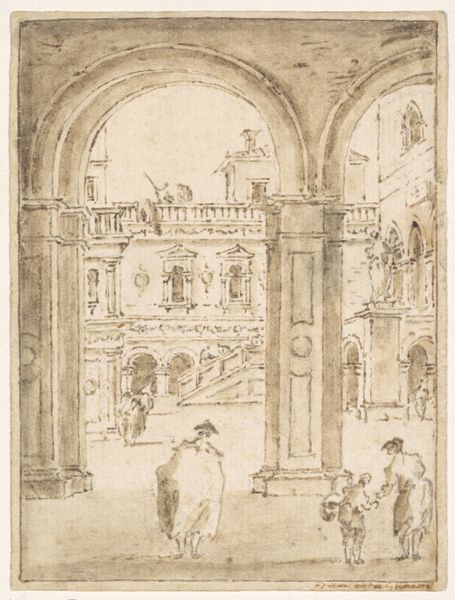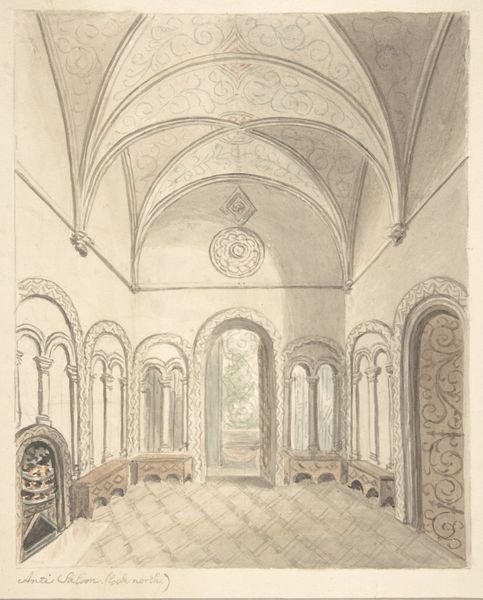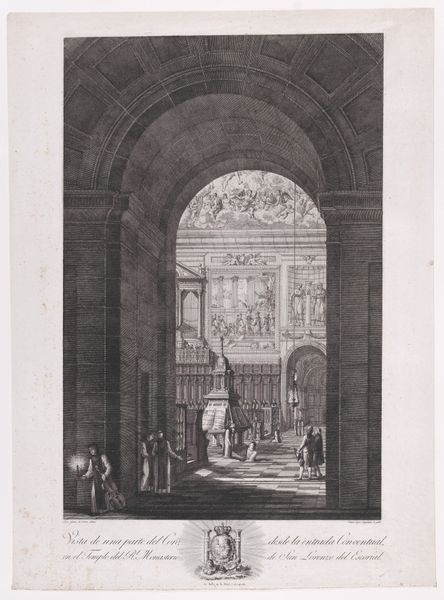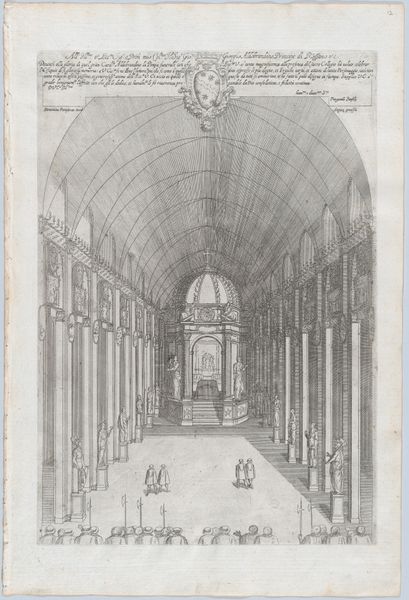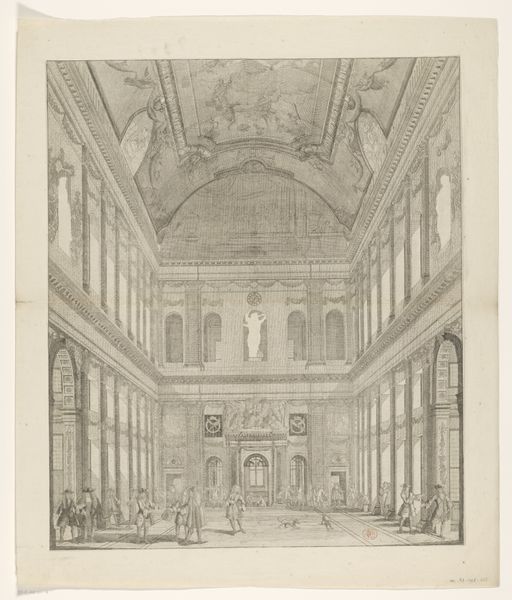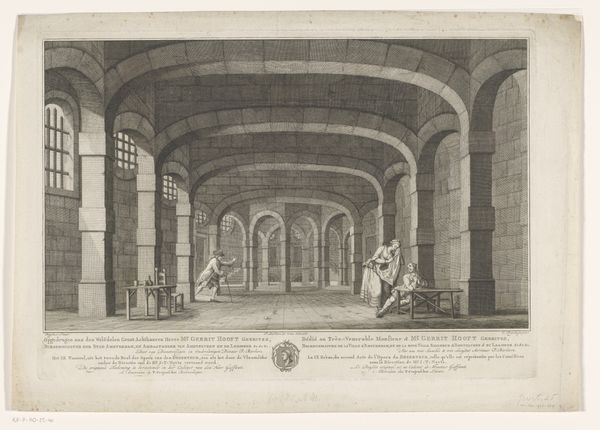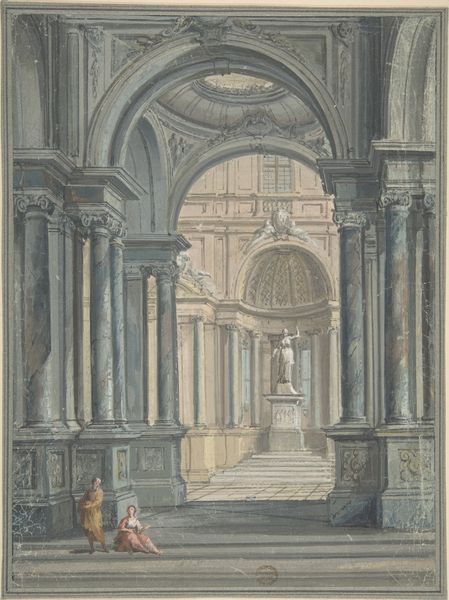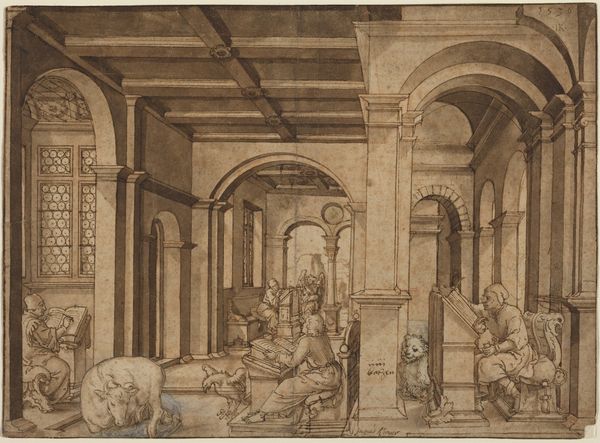
Copyright: Public Domain
Friedrich Wilhelm Ludwig rendered "Die Loggia dei Lanzi in Florenz" using pencil and watercolor, capturing a slice of Florence's artistic heart. Ludwig, born in 1828, lived in a time of burgeoning national identities and romanticism, which influenced his gaze upon Italy. The Loggia dei Lanzi itself is steeped in history, initially built in the 14th century to host public ceremonies and display the Republic's power. Yet Ludwig's depiction is quiet, almost melancholic. The statues, symbols of strength and virtue, stand silently as witnesses to history. The artist's choice of medium softens the scene. The delicate lines of the pencil and muted tones of watercolor evoke a sense of nostalgia. Instead of the triumphant, virile power the statues might suggest, there is an intimacy, an invitation for personal reflection. In Ludwig's "Die Loggia dei Lanzi in Florenz", we find a moment of pause, a space for contemplating the legacies of power, beauty, and the enduring human spirit.
Comments
No comments
Be the first to comment and join the conversation on the ultimate creative platform.

